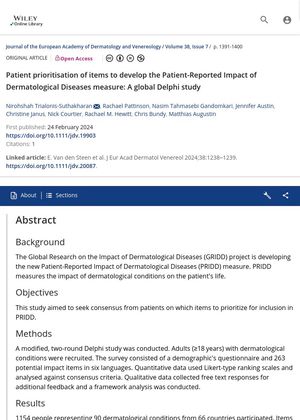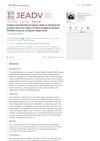Patient Prioritization of Items to Develop the Patient-Reported Impact of Dermatological Diseases Measure: A Global Delphi Study
February 2024
in “
Journal of the European Academy of Dermatology and Venereology
”

TLDR The study created a 27-item measure to assess the impact of skin diseases.
This study developed the Patient-Reported Impact of Dermatological Diseases (PRIDD) measure through a global Delphi process, involving 1154 participants in Round 1 and 493 in Round 2, from 65 countries. The study identified 27 prioritized items across five domains: physical, daily life, psychological, social, and financial impacts, to form the first draft of PRIDD. Key impacts included concerns about nails, skin, and hair, physical discomfort, and psychological stress. The study emphasized the need for a dermatology-specific patient-reported outcome measure (PROM) that captures impacts not addressed by existing PROMs, such as feelings of abandonment and role performance issues. The results advocate for integrating psychological support into dermatological care and highlight the importance of a biopsychosocial approach in treatment. The draft is ready for pilot testing to assess its comprehensiveness and relevance.





